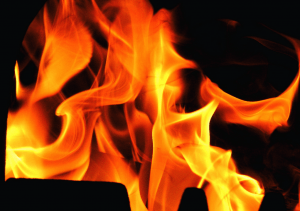Exclusive Sony France interview for YLovePhoto.com
Today, I’ve got a rather detailed talk with Édouard Schmitt, Sony France Alpha Product Manager, who helped me go over the current situation created by the announcement made by Sony a few days ago when they revealed that the digital sensor of the Alpha SLT-A33 and Alpha SLT-A55 could meet some over-heating issues (see our posts about it here).
As expected, he confirms us the information provided previously: The use of the video capture mode leads the digital sensor to heat up to the point where, after some time, the camera will decide to switch itself off (some kind of “thermal circuit breaker” kicking i, if you want).
What is more interesting is the overall presentation of the issue: “This is not a dysfunction of the sensor, but an auto-protection“. Furthermore, Édouard Schmitt went into the detail of the causes and confirms (and precises) the evaluations I could have provided here before:
- The image stabilization (which, for Sony as well as Pentax, operates by sensor displacement) produces some heat inside the camera,
- The sensor itself is a heat source –like any other electronic device– when it is used continuously like during video capture,
- The external temperature is also an important parameter in the equation (As a matter of fact, in the table provided here on the right, we see that the higher the external temperature, the shorter it takes for the sensor to overheat).
I noticed that sony insists heavily on the fact that image stabilization is a major factor here, from two different angles:
- It has a primary impact (It’s true that the useful shoot time is (more than) doubled when not using SteadyShot)
- This is the only solution offered by Sony; E.Schmitt excluded the possibility of a future firmware that could improve on the current status.
Nota bene: The observed maximum figure of 29 minutes comes from the normal recording limit of the camera as it is more or less forced upon us by fiscal regulation (a camera able to record longer sequences is heavily taxed in some countries and Sony decided like other manufacturers to stick to this limit for mere reasons of cost).
 Up to this, the message is relatively simple but some important elements are added by Édouard Schmitt. First and foremost, the cooling down process is very fast and a few seconds only are needed to obtain a few more minutes of video capture (some real-life tests will obviously be needed to quantify such a statement, but it seems that the Sony user will not forced to watch the camera cool down indefinitely).
Up to this, the message is relatively simple but some important elements are added by Édouard Schmitt. First and foremost, the cooling down process is very fast and a few seconds only are needed to obtain a few more minutes of video capture (some real-life tests will obviously be needed to quantify such a statement, but it seems that the Sony user will not forced to watch the camera cool down indefinitely).
Then, and it should be checked and confirmed, “it’s not better elsewhere“. Understand: Sony’s competition has the same kind of issues but they do not communicate much on it. [Ed: I’m still wondering what is the influence of image stabilization here]
As a matter of fact, according to E.Schmitt, “90 or 95% of customers first buy a photo camera [and for them] a 3-, 4- or 5-minute take, it’s already long“. In fact, those who have a longer need are not in the consumer market anymore and the impact on the sames of the Alpha 33 and Alpha 55 will be minimal. It is even suggested that “in the future generations” the issue will be taken with a different kind of attention (Ed: Here I cannot stop thinking about a future, possible, probable, Alpha 77).
The last two subjects that we discussed were relatively lateral or complementary (but the YLovePhoto readers know that this has been discussed here in the past): LiveView mode and the NEX family of cameras. On the one hand, I could not obtain any statement on the effect on continuous display on the back LCD of the photo camera, other than a bland comment on “it’s rarely continuously used.”

For the NEX-3 and NEX-5, there is no trouble here. They are not impacted by the issue. First and foremost because their image stabilization is not obtained through sensor displacement, but by the action on an optical group inside the lens (thus, one of the causes mentioned above disappears). The smaller size of the body is also participating by providing a much better thermal exchange with the external air and allows to keep the internal temperature lower.

